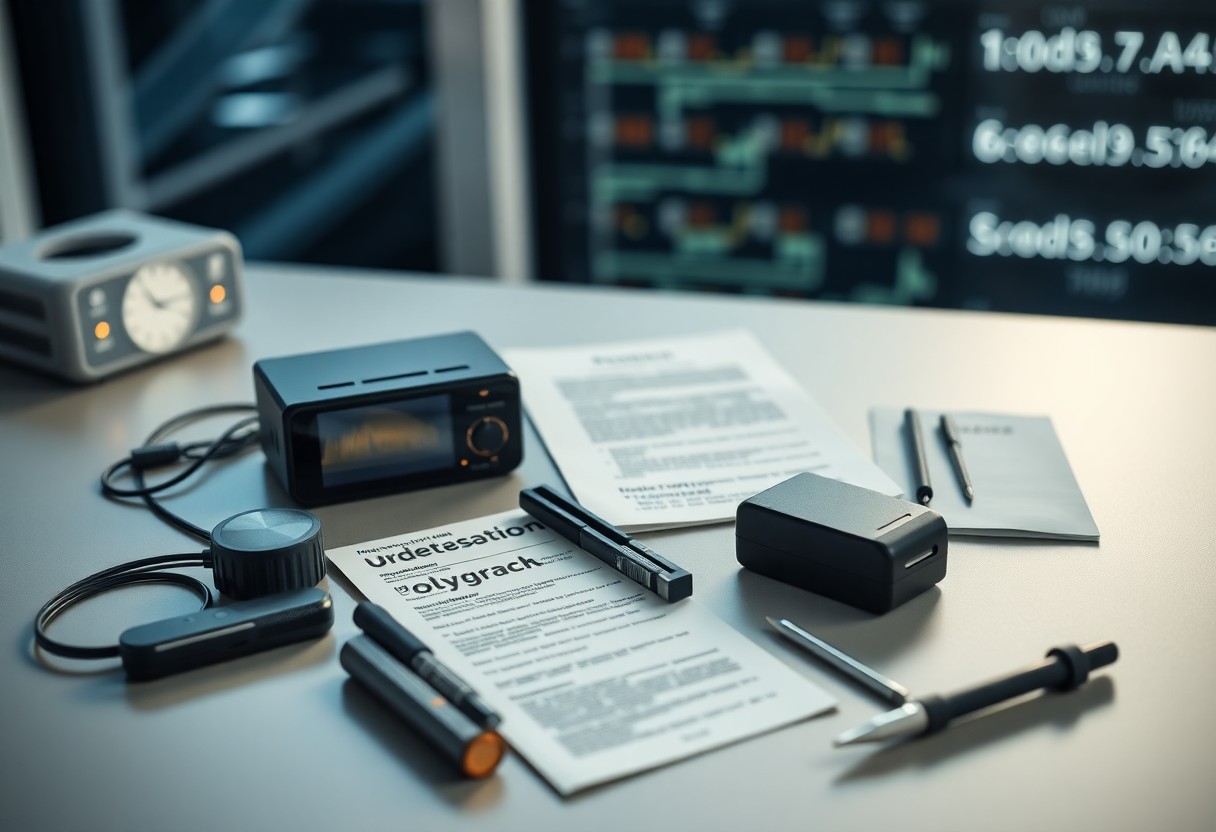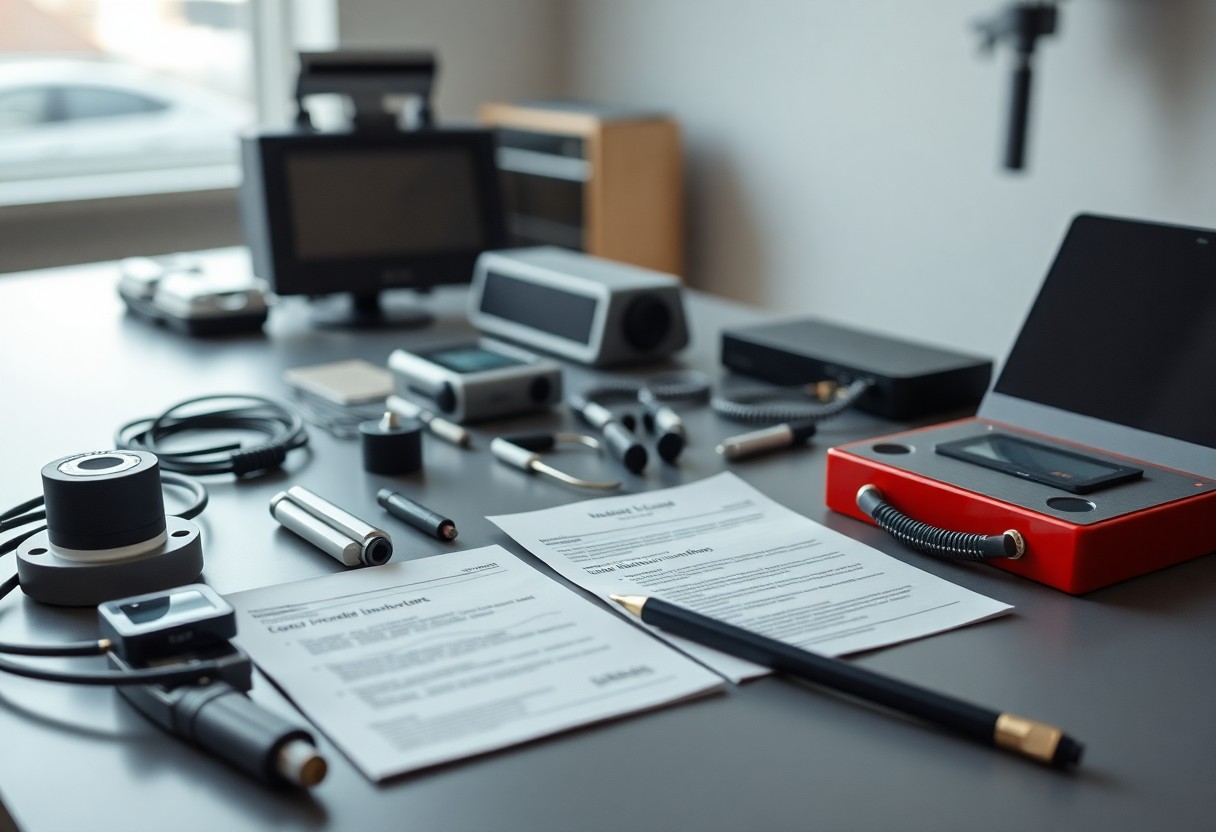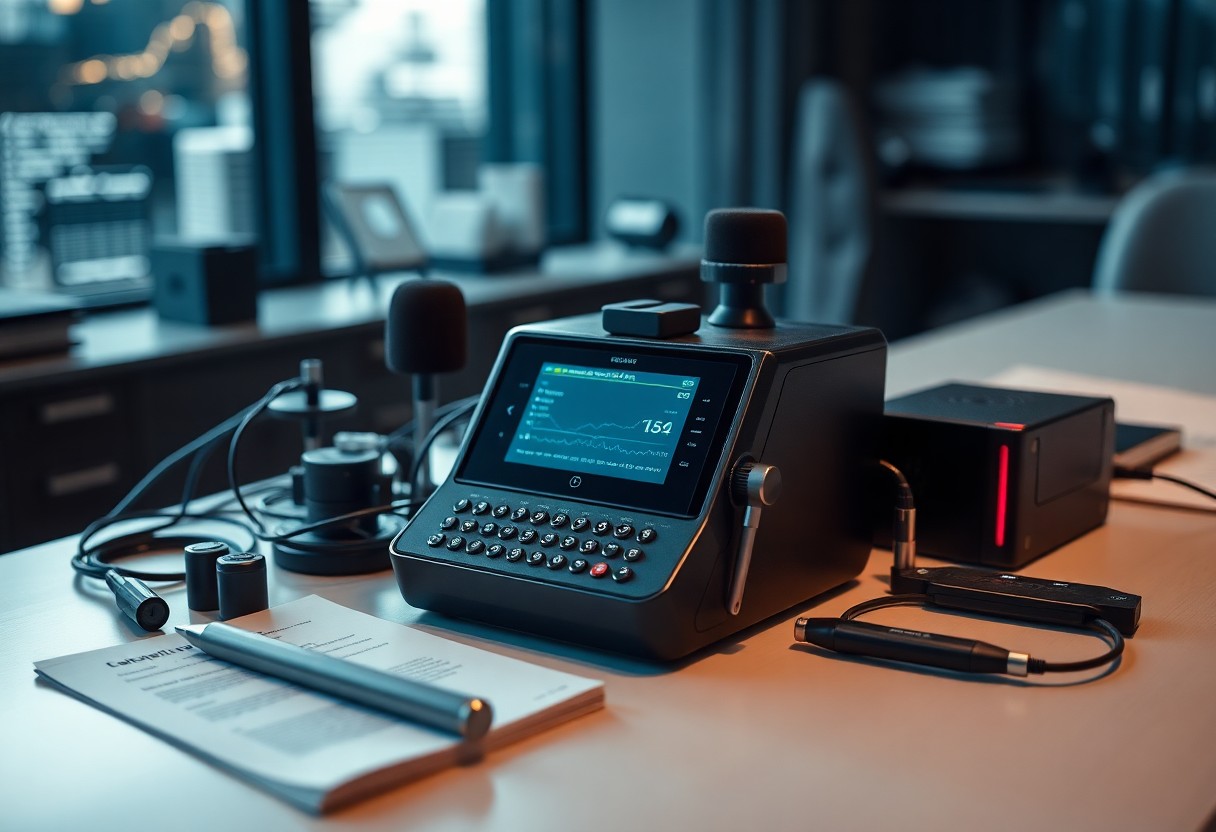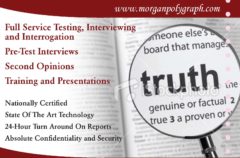
There’s a wealth of information to explore when it comes to polygraph accessories that can improve your testing efficiency and accuracy. By understanding the various tools available and how to integrate them into your setup, you can significantly boost the reliability of your results. This blog post will guide you through imperative components and practical steps to optimize your polygraph equipment, ensuring you’re fully equipped for accurate assessments.
Key Takeaways:
- Enhancement of polygraph accuracy is achievable by utilizing quality accessories that fit specific testing requirements.
- Maintenance of equipment, including regular checks of sensors and tools, can improve the longevity and reliability of polygraphs.
- Training on how to effectively use polygraph accessories is vital for examiners to maximize the potential of their equipment.

The Importance of Polygraph Accessories
The significance of polygraph accessories cannot be overstated. These tools not only complement your equipment but also enhance its overall performance. By utilizing the right accessories, you ensure that your polygraph sessions yield more accurate and reliable results, making your assessments more credible. Whether you are a seasoned professional or a newcomer, understanding the importance of these accessories will improve your practice and lead to better outcomes for your clients.
Enhancing Accuracy and Reliability
For optimal performance, polygraph accessories play a pivotal role in enhancing the accuracy and reliability of your results. When integrated properly, these items help maintain the integrity of the data collected and ensure consistency throughout the examination process. By investing in quality accessories, you reduce the risks of errors and improve the validity of your conclusions.
Types of Essential Accessories
One key aspect of improving your polygraph setup is being aware of the vital accessories available. These tools can significantly enhance your overall data collection and analysis experience. The following list represents some of the most vital accessories you should consider:
- Comfort straps
- Electrode pads
- Blood pressure cuff
- Calibration tools
- Data storage devices
Any polygraph setup can benefit from these vital accessories, ultimately leading to better assessment efficiency.
| Accessory | Function |
| Comfort straps | Enhance subject comfort during tests |
| Electrode pads | Ensure accurate physiological readings |
| Blood pressure cuff | Monitor physiological responses |
| Calibration tools | Maintain equipment accuracy |
| Data storage devices | Safeguard and store examination data |
And as you explore the world of polygraph accessories, you’ll find that understanding their different types enables you to select the best options for your needs. The right accessories will ensure your polygraph tests are performed smoothly and effectively. Moreover, they contribute to the overall management of your equipment. The goal is to create a streamlined process that allows you to focus on assessing your clients effectively. Here are some vital accessories to consider:
- Inkless tape
- Chest straps
- Jaw tape
- Reference dials
- High-quality cables
Any enhancement in your equipment can lead to greater efficiency and accuracy in your assessments.
Upgrading Your Polygraph Equipment
If you are serious about enhancing the accuracy of your polygraph tests, upgrading your equipment is a necessary step. Investing in the latest technology can improve data collection and analysis, streamline your workflow, and ultimately lead to more reliable results. Consider the compatibility of new accessories with your existing setup and stay informed about advancements in polygraph technology to make well-informed upgrades.
Selecting the Right Sensors
Your choice of sensors is vital for capturing precise physiological data during polygraph tests. Different sensors are designed for specific measurements such as respiratory patterns, heart rate, and Galvanic Skin Response. By selecting high-quality, compatible sensors, you can enhance your equipment’s performance and improve the overall effectiveness of your assessments.
Importance of Quality Control
To ensure the reliability and accuracy of your polygraph results, maintaining strict quality control is vital. Regular calibration of your equipment and consistent monitoring of sensor performance will help you identify issues before they affect your results. Establishing a robust quality control process not only strengthens the integrity of your data but also safeguards your reputation as a professional.
Indeed, implementing rigorous quality control measures is key to valid polygraph outcomes. Conducting frequent checks on your equipment, ensuring consistent calibration, and documenting procedures can drastically reduce the risk of inaccuracies. When your results are trustworthy, it enhances your credibility and contributes to the overall success of your practice. Emphasizing quality control allows you to maintain a high standard in your assessments, fostering confidence from both clients and stakeholders.
Maintenance Best Practices
Once again, maintaining your polygraph equipment is important for accuracy and reliability. Regular upkeep ensures that your results remain trustworthy and that your accessories function correctly. You can refer to this Components of a Polygraph Machine Study Guide to better understand what parts require attention.
Regular Inspection and Calibration
With consistent use of your polygraph equipment, regular inspection and calibration become vital. It’s important for you to check all components frequently, ensuring that they are functioning properly and consistently produce accurate data. Calibration should occur frequently, especially before high-stakes testing events.
Cleaning and Storage Guidelines
Regular cleaning and proper storage of your polygraph equipment play a significant role in its longevity and performance. Keeping your accessories free from dust and harmful substances ensures optimal functionality.
Cleaning your polygraph components should involve gentle techniques to avoid damage. Use a soft, lint-free cloth to wipe down surfaces, and ensure that you avoid harsh chemicals that can harm sensitive materials. After cleaning, make sure that you store your equipment in a dry, safe place to prevent any environmental damage. Following these guidelines will significantly enhance your equipment’s lifespan and effectiveness.
Compatibility Considerations
All polygraph accessories must be carefully evaluated for compatibility with your existing equipment to ensure optimal performance. In this regard, understanding the Varieties of Polygraph Testing and Uses is imperative, as it helps you identify which parts are designed specifically for your model. Incompatible accessories may not only hinder the accuracy of your tests but can also lead to equipment malfunctions, resulting in costly repairs.
Matching Accessories with Equipment Models
The selection of polygraph accessories should reflect the specifications of your equipment model. Always refer to your manufacturer’s guidelines or product manuals to find the right components. Failing to match accessories can lead to significant inefficiencies in your assessment processes, diminishing your results.
Future-Proofing Your Setup
Behind every successful polygraph operation lies a setup designed to adapt over time. Selecting accessories that are not only compatible but also versatile allows you to easily upgrade your equipment without incurring excessive costs or downtime. Keeping an eye on emerging technologies will help you remain competitive in the field.
Compatibility with future developments is vital for ensuring your polygraph setup remains effective. Choose accessories that offer modular capabilities, allowing you to swap components based on advancements in technology. Investing in accessories that support a wide range of models can save you money and effort in the long run. Create a flexible environment where you can easily integrate new features as they emerge, ensuring your equipment remains reliable and efficient in the face of evolving testing standards.
Training and Familiarization
For effective use of polygraph accessories, it is imperative to undergo adequate training and familiarization. This process ensures that you gain confidence in operating your equipment, leading to accurate results in assessments. Understanding the nuances of each accessory will allow you to maximize their potential and enhance your polygraph practice.
Understanding Equipment Features
Features of your polygraph accessories play a significant role in their overall functionality and effectiveness. Familiarizing yourself with these features will enable you to leverage the technology available, ensuring your assessments are both comprehensive and accurate, resulting in more reliable outcomes.
Training Staff on New Accessories
With the introduction of new accessories, training your staff is paramount to ensure seamless integration into your existing practices. Providing comprehensive training helps in building expertise, reducing the likelihood of errors, and increasing overall efficiency during assessments.
Equipment updates require thorough instruction for your team to maximize their capabilities. Strong emphasis should be placed on demonstrating safety protocols, handling the accessories properly, and understanding troubleshooting techniques. This proactive approach helps in preventing potential mishaps and enhances the reliability of the data obtained from the polygraphs. Furthermore, ensuring that your staff feels competent and confident with the new tools can significantly boost productivity and morale in the workplace.

Cost-Benefit Analysis
Keep in mind that understanding the cost-benefit ratio of polygraph accessories is important for making informed decisions. Every enhancement you consider should reflect not only an improvement in performance but also an justifiable expense. For a deeper investigate Understanding the Key Components of a Polygraph, weigh the costs against the potential advantages these upgrades could bring to your practice or investigation techniques.
Evaluating Investment vs. Performance
To determine whether upgrading your polygraph accessories is worthwhile, assess how each potential investment affects the overall performance of your equipment. Analyzing metrics such as accuracy, efficiency, and operational convenience will guide you in making choices that can benefit your assessments and improve client outcomes.
Long-term Benefits of Upgraded Accessories
CostBenefit evaluations often highlight sustainable value from investing in quality accessories.
Due to the enhanced accuracy and reliability that upgraded accessories offer, you may find that they reduce the need for frequent equipment replacements and repairs. Improved technology can lead to more efficient evaluations, ultimately translating to better outcomes for your clients. These long-term benefits position your practice as a leader in the field, fostering client trust and potentially increasing your overall revenues. Investing wisely today can produce compounding benefits for years to come.
To wrap up
To wrap up, enhancing your polygraph equipment with the right accessories can significantly improve the accuracy and reliability of your results. By investing in quality sensors, cables, and calibration tools, you empower your polygraph sessions to produce more precise data. Familiarizing yourself with each accessory and its proper usage helps you maintain your equipment in peak condition, ensuring the integrity of your assessments. Stay informed about new advancements in technology to elevate your practice, ultimately leading to more trustworthy outcomes in your evaluations.
Q: What are polygraph accessories and why are they important?
A: Polygraph accessories include a variety of components such as sensors, cables, and software that enhance the functionality and effectiveness of polygraph testing equipment. These accessories are important because they ensure accurate data collection, improve the reliability of results, and can also contribute to the comfort of the subject being tested. By utilizing high-quality accessories, examiners can minimize artifacts and other factors that could interfere with the interpretation of physiological responses.
Q: How do I select the right polygraph accessories for my needs?
A: When selecting polygraph accessories, consider factors such as compatibility with your existing polygraph system, the specific types of tests you conduct, and the demographic of your subjects. It is beneficial to seek out components from reputable manufacturers that offer warranties and customer support. Additionally, reading reviews and obtaining recommendations from experienced colleagues can help you choose accessories that enhance the accuracy and ease of your testing processes.
Q: What maintenance steps should I follow to ensure my polygraph accessories remain in good condition?
A: Regular maintenance of polygraph accessories is key to ensuring their longevity and reliability. Start by routinely inspecting sensors and cables for wear or damage, and clean them according to the manufacturer’s guidelines to prevent contamination. It’s also important to store accessories properly when not in use, keeping them in a protective case or designated area to avoid unnecessary harm. Lastly, consult the user manual for specific maintenance recommendations on any software updates or calibration that may be required periodically.
